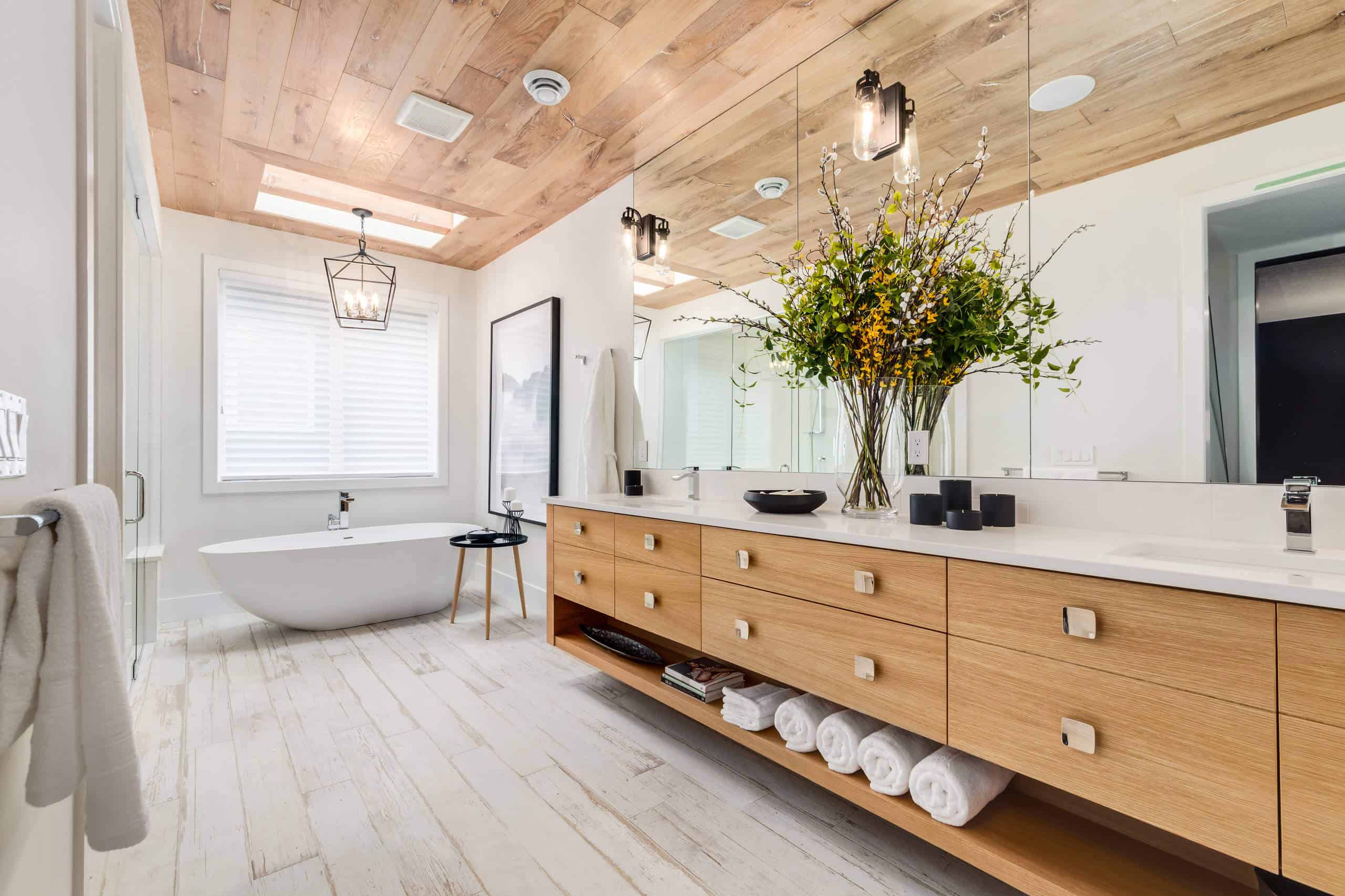Preparing the Laminate Walls

Before applying paint to laminate walls in a bathroom, proper preparation is essential to ensure a durable and professional-looking finish. This involves cleaning, sanding, and priming the laminate surface.
Cleaning the Laminate Surface
Begin by cleaning the laminate walls thoroughly to remove any dirt, dust, or grease that could interfere with paint adhesion. Use a degreaser or a solution of warm water and dish soap, and apply it to the walls with a damp cloth. Wipe down the walls in a circular motion, rinsing the cloth frequently. Allow the walls to dry completely before proceeding.
Sanding the Laminate Surface, How to paint laminate walls in bathroom
Sanding the laminate surface is crucial for creating a rough texture that will allow the paint to adhere properly. Use a fine-grit sandpaper (120-150 grit) and sand the walls in a light, circular motion. Avoid sanding too aggressively, as this could damage the laminate. Once the walls have been sanded, wipe them down with a damp cloth to remove any dust.
Choosing and Applying the Right Paint: How To Paint Laminate Walls In Bathroom

How to paint laminate walls in bathroom – The type of paint you choose for your laminate walls will depend on the specific type of laminate and the desired finish. Latex or acrylic-based paints are generally suitable for laminate walls, as they are durable, easy to apply, and resistant to moisture. When selecting a paint, it is important to consider the sheen and color that will best complement the bathroom environment.
Sheen
The sheen of the paint refers to its level of glossiness. For bathroom walls, a satin or semi-gloss finish is often recommended, as it is easy to clean and provides a subtle sheen that can help to reflect light and make the space feel larger. Avoid using a flat or matte finish, as it can be more difficult to clean and may not provide the desired level of durability.
Color
The color of the paint should be chosen to complement the overall design of the bathroom. Light colors, such as white or beige, can help to make the space feel larger and brighter, while darker colors can create a more dramatic and intimate atmosphere. It is important to consider the existing fixtures and décor in the bathroom when selecting a paint color.
Application
Once you have chosen the right paint, it is important to apply it correctly. The best method of application will depend on the type of paint and the size of the area to be painted. For small areas, a brush can be used, while a roller is more suitable for larger areas. If you are using a sprayer, be sure to follow the manufacturer’s instructions carefully.
Before applying the paint, it is important to clean the laminate walls thoroughly to remove any dirt or debris. Once the walls are clean, apply a primer to help the paint adhere better. Allow the primer to dry completely before applying the paint.
When applying the paint, use even strokes and overlap each stroke slightly. Be sure to apply multiple coats of paint, allowing each coat to dry completely before applying the next. Once the final coat of paint has been applied, allow it to dry completely before using the bathroom.
Finishing Touches and Maintenance

To ensure the longevity of your painted laminate walls in the bathroom, it is crucial to apply a clear sealant or topcoat. This protective layer will shield the paint from moisture, stains, and wear, extending its lifespan and maintaining its pristine appearance.
Cleaning and Maintenance
Regular cleaning is essential to maintain the beauty and hygiene of your painted laminate walls. Use a mild detergent mixed with warm water and a soft cloth or sponge. Avoid harsh chemicals or abrasive cleaners, as they can damage the paint finish.
For stubborn stains, try using a non-abrasive cleaner specifically designed for laminate surfaces. Always test the cleaner in an inconspicuous area first to ensure it does not harm the paint.
High-Moisture Areas
In high-moisture areas, such as around the shower or sink, the paint finish may be more susceptible to damage. To mitigate this, consider applying a mildew-resistant paint or primer. Additionally, ensure adequate ventilation to prevent moisture buildup, which can lead to peeling or blistering of the paint.
Painting laminate walls in the bathroom can be a daunting task, but with the right preparation and materials, it can be a rewarding experience. If you’re looking for inspiration for your bathroom décor, check out my home decor blog for some great ideas.
Once you’ve decided on a color scheme, you can start painting your laminate walls. Be sure to use a primer specifically designed for laminate surfaces, and allow it to dry completely before applying the paint.
While painting laminate walls in a bathroom requires careful preparation, don’t overlook the potential for adding a touch of whimsy with dog bathroom wall art. These charming pieces can brighten up the space and create a playful atmosphere. When you’re finished, your bathroom will be both stylish and inviting, with a fresh coat of paint and a dash of canine charm.